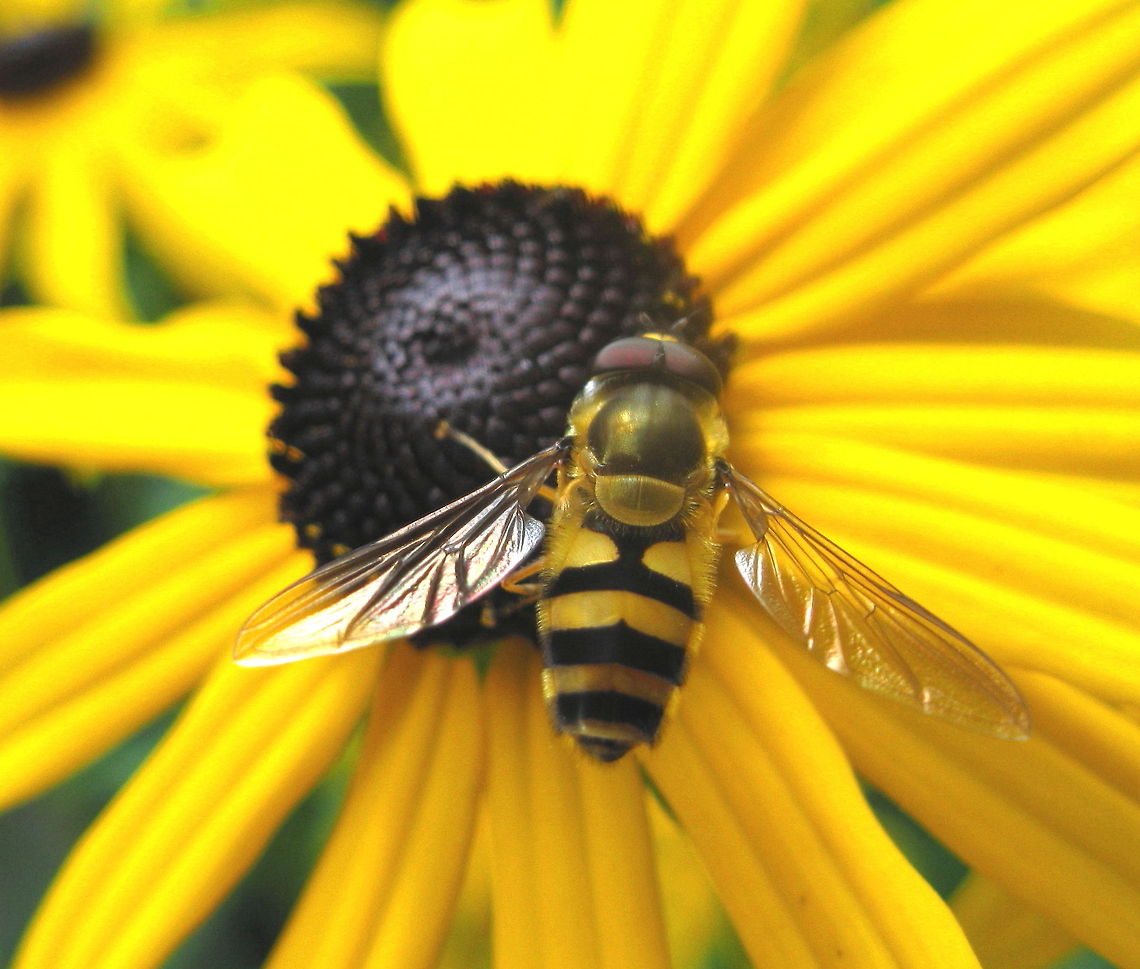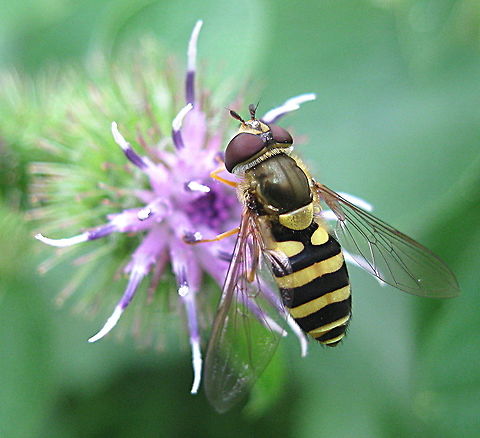 Species introCountry intro
Species introCountry intro
American Hover fly (Eupeodes americanus) on a Black-eyed Susan (Rudbeckia hirta)
My flower gardens are full of these pretty Black-eyed Susans......so there are always hover flies too! Commonly mistaken for bees, the hover fly is a colorful yellow and black striped (or banded) flower fly that have no stringer.

The American hoverfly, "Eupeodes americanus", is found throughout North America and inhabits meadows, and fields with flowers and foliage. Adults feed on nectar, whereas their larvae feed on aphids.
Similar species: True Flies
By Deb Cappello
All rights reserved
Uploaded Jul 27, 2014. Captured Aug 14, 2009 15:34 in 131-133 Grand Army of the Republic Highway, Kane, PA 16735, USA.

comments (3)
I see you have done it correctly on some of your other images, so I'm hoping you can do it on the rest as well. In case you have any questions, please let me know. Posted 11 years ago
To get to that point, proper sharing and identification is key. It's better in all ways:
- It will educate yourself, and also will get more people to actually see your photos
- It will be better for the community, as more interesting content can be found
- It will be better for moderators, which have a lot of work in processing undescribed photos
In other words, it's better to describe a few photos well than to upload dozens or hundreds without description. The few photos will make more impact. Allow me to show you an example of a well described photo:
Don't focus on the photo itself, check out how it is described. It has it all. The species is identified, it has a proper title, the description shows where and how it was captured and how the subject behaves. It is well-tagged and also geotagged.
That is the level of describing photos that we aspire to. We can't always be that complete, but we should make an effort to move in that direction.
Hoping you'll now go back and describe your set :) Posted 11 years ago